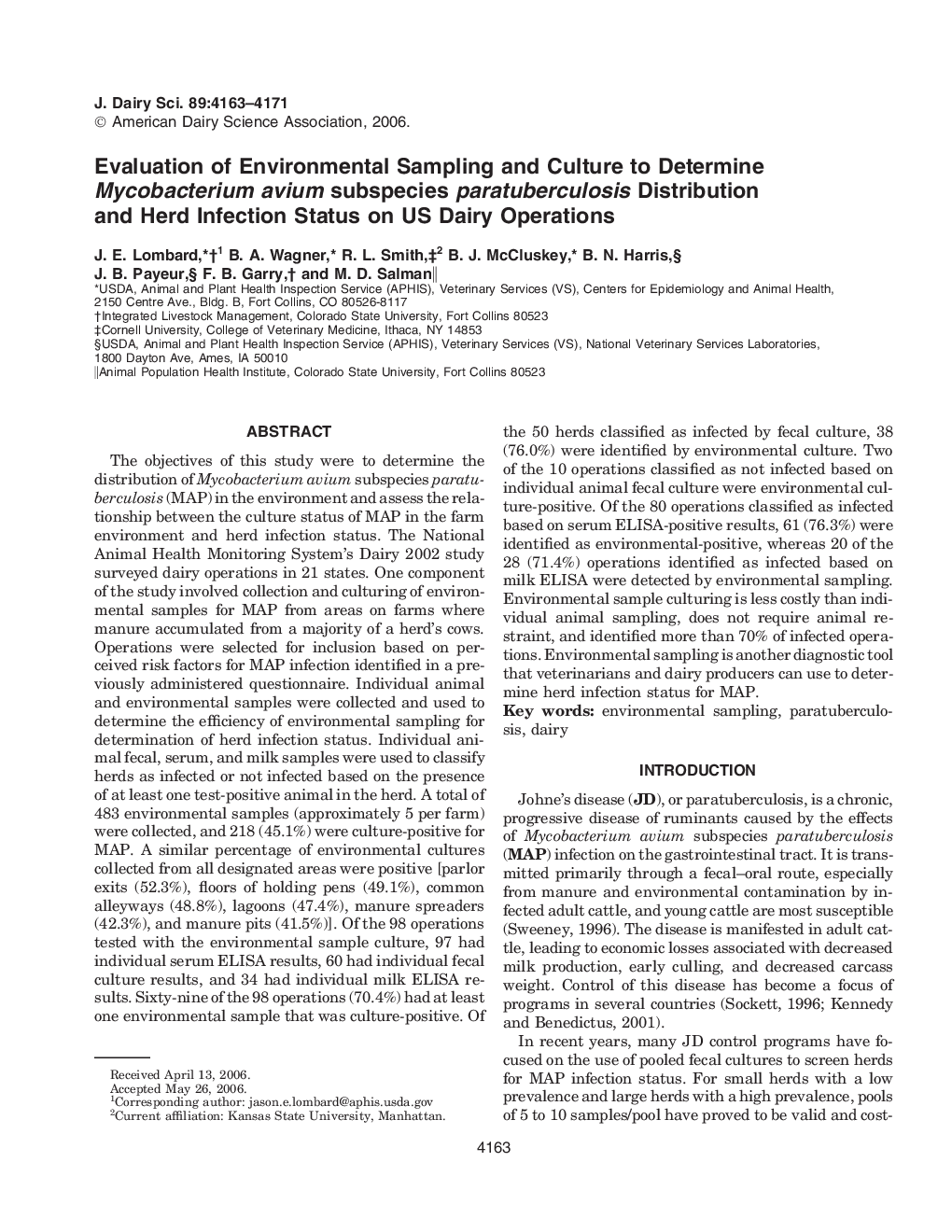| Article ID | Journal | Published Year | Pages | File Type |
|---|---|---|---|---|
| 2441041 | Journal of Dairy Science | 2006 | 9 Pages |
The objectives of this study were to determine the distribution of Mycobacterium avium subspecies paratuberculosis (MAP) in the environment and assess the relationship between the culture status of MAP in the farm environment and herd infection status. The National Animal Health Monitoring System's Dairy 2002 study surveyed dairy operations in 21 states. One component of the study involved collection and culturing of environmental samples for MAP from areas on farms where manure accumulated from a majority of a herd's cows. Operations were selected for inclusion based on perceived risk factors for MAP infection identified in a previously administered questionnaire. Individual animal and environmental samples were collected and used to determine the efficiency of environmental sampling for determination of herd infection status. Individual animal fecal, serum, and milk samples were used to classify herds as infected or not infected based on the presence of at least one test-positive animal in the herd. A total of 483 environmental samples (approximately 5 per farm) were collected, and 218 (45.1%) were culture-positive for MAP. A similar percentage of environmental cultures collected from all designated areas were positive [parlor exits (52.3%), floors of holding pens (49.1%), common alleyways (48.8%), lagoons (47.4%), manure spreaders (42.3%), and manure pits (41.5%)]. Of the 98 operations tested with the environmental sample culture, 97 had individual serum ELISA results, 60 had individual fecal culture results, and 34 had individual milk ELISA results. Sixty-nine of the 98 operations (70.4%) had at least one environmental sample that was culture-positive. Of the 50 herds classified as infected by fecal culture, 38 (76.0%) were identified by environmental culture. Two of the 10 operations classified as not infected based on individual animal fecal culture were environmental culture-positive. Of the 80 operations classified as infected based on serum ELISA-positive results, 61 (76.3%) were identified as environmental-positive, whereas 20 of the 28 (71.4%) operations identified as infected based on milk ELISA were detected by environmental sampling. Environmental sample culturing is less costly than individual animal sampling, does not require animal restraint, and identified more than 70% of infected operations. Environmental sampling is another diagnostic tool that veterinarians and dairy producers can use to determine herd infection status for MAP.
